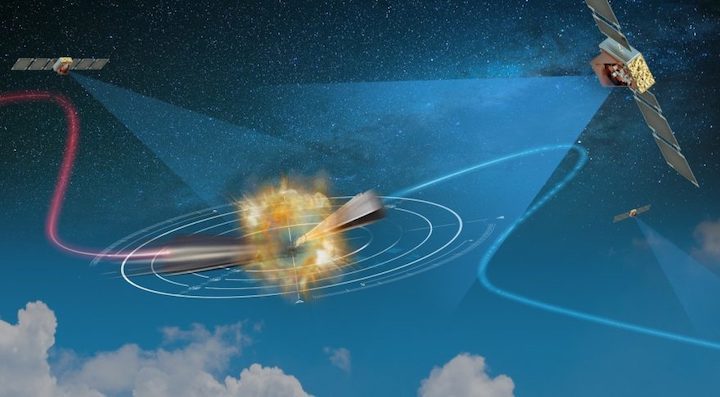1.11.2019

WASHINGTON — The Missile Defense Agency awarded Northrop Grumman, Raytheon, Leidos and L3Harris each a $20 million contract to design space sensors that can track hypersonic and ballistic missiles, the agency announced Oct. 29.
The four bids were selected from a total of 12 submitted for the Hypersonic and Ballistic Tracking Space Sensor program, MDA said. The bids were solicited by the Air Force Space and Missile Systems Center’s Space Enterprise Consortium on behalf of MDA.
The Hypersonic and Ballistic Tracking Space Sensor (HBTSS) program was previously known as the Space Sensor Layer.
Under the contract, each company has to design a prototype sensor payload by Oct. 31, 2020.
The awards come 10 months after the release of the Trump administration’s Missile Defense Reviewthat called for the deployment of space sensors to monitor, detect and track advanced, maneuvering hypersonic glide vehicles from anywhere on the globe. Space sensors “enjoy a measure of flexibility of movement that is unimpeded by the constraints that geographic limitations impose on terrestrial sensors, and can provide ‘birth to death’ tracking that is extremely advantageous,” the review said.
The United States since the 1990s has had a missile shield — a network of ground, air and sea based radars and interceptors — to protect the nation from ballistic missiles launched by countries like North Korea and Iran. The HBTSS would add new capabilities to detect advanced hypersonic glide weapons developed by China and Russia that would be undetectable by current systems after the initial boost phase of their flight, said Tom Karako, missile defense analyst at the Center for Strategic and International Studies.
Karako called the MDA contract awards a step in the right direction. “It’s good that we’re moving out on the mission,” he told SpaceNews Oct. 30. “Time is ticking by. The need for hypersonic and ballistic missile tracking is now.”
Quelle: SN
